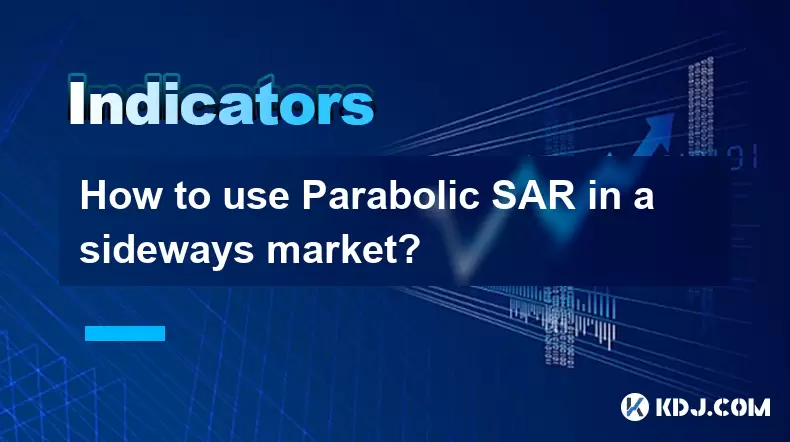-
 Bitcoin
Bitcoin $118000
0.81% -
 Ethereum
Ethereum $3579
2.21% -
 XRP
XRP $3.436
1.63% -
 Tether USDt
Tether USDt $1.000
-0.03% -
 BNB
BNB $734.9
1.87% -
 Solana
Solana $177.9
2.09% -
 USDC
USDC $0.9999
-0.01% -
 Dogecoin
Dogecoin $0.2422
5.82% -
 TRON
TRON $0.3205
-0.56% -
 Cardano
Cardano $0.8326
3.69% -
 Hyperliquid
Hyperliquid $44.98
3.47% -
 Stellar
Stellar $0.4642
1.89% -
 Sui
Sui $3.839
3.86% -
 Chainlink
Chainlink $18.47
6.00% -
 Hedera
Hedera $0.2693
3.71% -
 Avalanche
Avalanche $24.91
7.30% -
 Bitcoin Cash
Bitcoin Cash $517.3
1.93% -
 Shiba Inu
Shiba Inu $0.00001495
4.46% -
 Litecoin
Litecoin $112.5
11.69% -
 UNUS SED LEO
UNUS SED LEO $8.978
0.06% -
 Toncoin
Toncoin $3.222
1.84% -
 Polkadot
Polkadot $4.430
6.36% -
 Uniswap
Uniswap $10.13
1.08% -
 Monero
Monero $320.3
0.32% -
 Ethena USDe
Ethena USDe $1.001
-0.05% -
 Bitget Token
Bitget Token $4.894
2.32% -
 Pepe
Pepe $0.00001335
4.48% -
 Dai
Dai $0.9999
-0.01% -
 Aave
Aave $317.3
1.34% -
 Cronos
Cronos $0.1225
3.98%
How to use Parabolic SAR in a sideways market?
In sideways markets, adjust the Parabolic SAR with filters like RSI, support/resistance, or candlestick patterns to reduce false signals and improve trade accuracy.
Jul 13, 2025 at 11:43 am

Understanding the Parabolic SAR in Different Market Conditions
The Parabolic SAR (Stop and Reverse) is a popular technical indicator used by traders to identify potential reversals in price direction. It works effectively in trending markets, where prices move consistently in one direction over time. However, in a sideways market, also known as a ranging or consolidating market, the Parabolic SAR tends to generate false signals due to frequent price fluctuations without a clear trend.
In such conditions, traders must adjust their strategy when using this indicator. Instead of relying solely on the SAR dots for entry and exit points, it's essential to combine it with other tools that can filter out noise and provide better clarity in non-trending environments.
Recognizing a Sideways Market Environment
Before applying any adjustments to the Parabolic SAR, it's crucial to confirm whether the market is indeed moving sideways. A sideways market is characterized by horizontal price movement within a support and resistance zone, without a dominant uptrend or downtrend. Traders can use tools like:
- Moving Averages: If the 50-day and 200-day moving averages are flat or nearly parallel, it may indicate a lack of trend.
- Bollinger Bands: Narrowing bands often suggest low volatility and a possible consolidation phase.
- ADX (Average Directional Index): An ADX value below 25 typically indicates a weak or non-existent trend.
By confirming the absence of a strong trend, traders avoid misinterpreting Parabolic SAR signals during periods of consolidation.
Filtering False Signals Using Additional Indicators
One of the main issues with using the Parabolic SAR in a sideways market is the generation of numerous false reversal signals. To mitigate this, traders can apply additional filters:
- Volume Analysis: Look for spikes in volume that may signal genuine breakouts or breakdowns rather than random price swings.
- Support and Resistance Levels: Use key price zones to validate SAR signals. For example, if the SAR flips above the price near a resistance level, it might not be a reliable sell signal.
- RSI (Relative Strength Index): RSI divergence or overbought/oversold levels can help confirm whether a SAR reversal is likely valid or just a false trigger.
These filters help traders avoid entering trades based purely on SAR flips, which are common and misleading in range-bound markets.
Adjusting Parabolic SAR Settings for Range Markets
The default settings for Parabolic SAR are usually set at an acceleration factor of 0.02 and a maximum of 0.20. However, these values may be too sensitive in a sideways market, leading to excessive dot reversals. One solution is to tweak the parameters:
- Increase the acceleration factor increment: This makes the SAR less reactive to small price movements.
- Lower the maximum acceleration limit: Doing so reduces how quickly the SAR "catches up" to price, thereby reducing sensitivity.
Some platforms allow customization of these values directly from the indicator settings. Experimenting with different values helps find a balance between responsiveness and reliability in ranging conditions.
Using Price Action Confirmation Techniques
Another effective approach involves combining Parabolic SAR with candlestick patterns or price action signals. These techniques involve analyzing individual candle formations to determine whether a SAR flip has real significance:
- Pin Bars: These can indicate rejection at key support/resistance levels and may align with SAR reversals.
- Inside Bars: Often signal market indecision and can precede a breakout.
- Engulfing Candles: May suggest a stronger reversal when aligned with a SAR flip.
By waiting for candlestick confirmation after a SAR dot appears, traders increase the probability of entering a valid trade and reduce the number of whipsaws.
Practical Example: Applying Parabolic SAR in a Real Sideways Scenario
Let’s walk through a practical example of using Parabolic SAR in a sideways market step-by-step:
- Identify a currency pair or asset showing clear support and resistance levels with no directional bias.
- Apply the Parabolic SAR with default settings and observe the frequent flipping of dots.
- Overlay the RSI indicator and watch for overbought (>70) or oversold (<30) readings.
- When the SAR flips to the opposite side of the price, check if RSI confirms the move (e.g., SAR flips below price while RSI breaks above 70).
- Wait for a candlestick pattern that supports the SAR reversal before entering a trade.
- Place stop-loss orders beyond recent swing highs/lows to manage risk effectively.
This process ensures that Parabolic SAR is not used in isolation, especially when the market lacks a clear trend.
Frequently Asked Questions (FAQ)
Q: Can I completely ignore Parabolic SAR in a sideways market?
A: While you can choose not to use it, adjusting its application instead of ignoring it entirely allows you to benefit from its strengths without falling into false signals.
Q: How do I know if a SAR signal is genuine in a sideways market?
A: Combine the signal with support/resistance levels, volume changes, or candlestick patterns to verify its validity.
Q: Are there alternative indicators better suited for sideways markets?
A: Yes, oscillators like RSI, MACD, or Stochastic are generally more effective in non-trending environments compared to trend-following indicators like SAR.
Q: Should I disable Parabolic SAR during range-bound trading sessions?
A: Rather than disabling it, consider using it alongside other tools to improve decision-making quality without relying solely on its signals.
Disclaimer:info@kdj.com
The information provided is not trading advice. kdj.com does not assume any responsibility for any investments made based on the information provided in this article. Cryptocurrencies are highly volatile and it is highly recommended that you invest with caution after thorough research!
If you believe that the content used on this website infringes your copyright, please contact us immediately (info@kdj.com) and we will delete it promptly.
- Tinubu, the North, and Appointments: Too Little, Too Late?
- 2025-07-20 03:20:15
- Stellar Blade Hacked: When Crypto Scams Target Your Favorite Games
- 2025-07-20 03:50:12
- MoonBull, Doginme, and Meme Coins: What's the Buzz in 2025?
- 2025-07-20 03:50:12
- Dogecoin's Wild Ride: Price Forecast & the Utility Sector Buzz
- 2025-07-20 03:55:12
- Tinubu's Appointments: A Northern Perspective
- 2025-07-20 03:55:12
- Tinubu's Northern Appointments: A Cynical Ploy or Genuine Inclusion?
- 2025-07-20 04:00:12
Related knowledge

Advanced RSI strategies for crypto
Jul 13,2025 at 11:01am
Understanding the Basics of RSI in Cryptocurrency TradingThe Relative Strength Index (RSI) is a momentum oscillator used to measure the speed and chan...

Crypto RSI for day trading
Jul 12,2025 at 11:14am
Understanding RSI in the Context of Cryptocurrency TradingThe Relative Strength Index (RSI) is a momentum oscillator used to measure the speed and cha...

Crypto RSI for scalping
Jul 12,2025 at 11:00pm
Understanding RSI in the Context of Crypto TradingThe Relative Strength Index (RSI) is a momentum oscillator widely used by traders to measure the spe...

What does an RSI of 30 mean in crypto
Jul 15,2025 at 07:07pm
Understanding RSI in Cryptocurrency TradingRelative Strength Index (RSI) is a momentum oscillator widely used in cryptocurrency trading to measure the...

What does an RSI of 70 mean in crypto
Jul 13,2025 at 06:07pm
Understanding the RSI Indicator in Cryptocurrency TradingThe Relative Strength Index (RSI) is a widely used technical analysis tool that helps traders...

Does RSI work in a bear market for crypto
Jul 16,2025 at 01:36pm
Understanding RSI in Cryptocurrency TradingThe Relative Strength Index (RSI) is a momentum oscillator used by traders to measure the speed and change ...

Advanced RSI strategies for crypto
Jul 13,2025 at 11:01am
Understanding the Basics of RSI in Cryptocurrency TradingThe Relative Strength Index (RSI) is a momentum oscillator used to measure the speed and chan...

Crypto RSI for day trading
Jul 12,2025 at 11:14am
Understanding RSI in the Context of Cryptocurrency TradingThe Relative Strength Index (RSI) is a momentum oscillator used to measure the speed and cha...

Crypto RSI for scalping
Jul 12,2025 at 11:00pm
Understanding RSI in the Context of Crypto TradingThe Relative Strength Index (RSI) is a momentum oscillator widely used by traders to measure the spe...

What does an RSI of 30 mean in crypto
Jul 15,2025 at 07:07pm
Understanding RSI in Cryptocurrency TradingRelative Strength Index (RSI) is a momentum oscillator widely used in cryptocurrency trading to measure the...

What does an RSI of 70 mean in crypto
Jul 13,2025 at 06:07pm
Understanding the RSI Indicator in Cryptocurrency TradingThe Relative Strength Index (RSI) is a widely used technical analysis tool that helps traders...

Does RSI work in a bear market for crypto
Jul 16,2025 at 01:36pm
Understanding RSI in Cryptocurrency TradingThe Relative Strength Index (RSI) is a momentum oscillator used by traders to measure the speed and change ...
See all articles

























































































